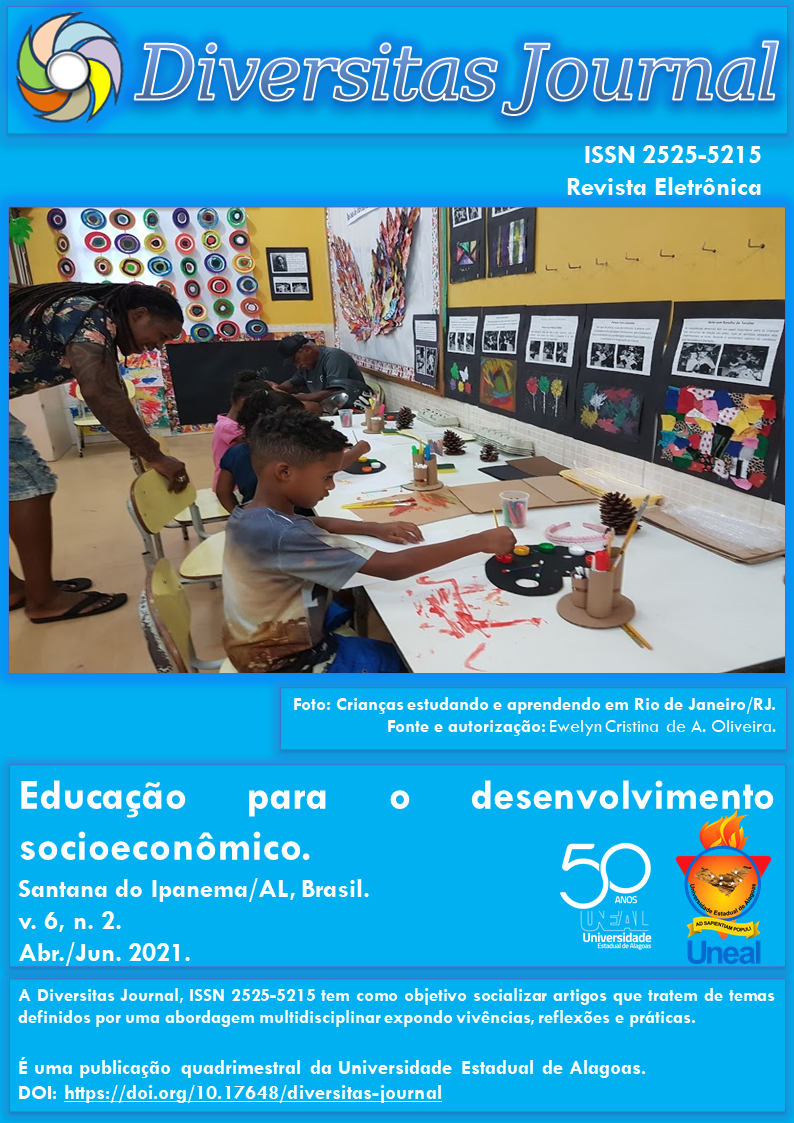Características fitoquímicas e capacidade antioxidante de Tabebuia caraíba (Caraibeira)
DOI:
https://doi.org/10.17648/diversitas-journal-v6i2-1317Abstract
ABSTRACT: The use of plants for medicinal purposes has accompanied humans since the first centuries, their use for a long time represented the only source of medicinal material. Native to the Caatinga biome, Tabebuia caraíba is popularly used for its expectorant and antipyretic action. Thus, the present work aims to analyze the phytochemical extract composition of the species, as well as its antioxidant activity (DPPH and ABTS methods). It was possible to obtain data on the chemical characteristics of three parts (branches, leaves and trunk) of the species, with the presence of flavonoids, catechins, anthocyanidins, triterpenoids, steroids, phenols, tannins and leucoanthocinidines. In the anthocyanins analysis, the leaves obtained the highest result, 5.040 mg/100g of the evaluated sample. The tannins quantification showed a higher result for leaves, with 1506 ppm. In capturing the DPPH radical, a better capacity was obtained for the aqueous extract of the bark, with an IC50 of 112.50 ppm. For the ABTS radical capture methodology, the bark extract in ethanol reached the result of 739.64 µM trolox/g, a high value compared to other studies that used this methodology. The use of two methodologies proved to be effective when none of the hexane extracts showed activity for the DPPH methodology, whereas for the ABTS methodology, it was possible to detect the activity. The tests performed showed important results for the development of studies in the research area in question.
KEYWORDS: Medicinal plants, antioxidants, anthocyanins.
Metrics
Downloads
Published
How to Cite
Issue
Section
License
Copyright (c) 2021 Leonardo Alcântara Alves, Lucas Gomes Linhares, Luma Misma Alves Câmara, Matheus Gomes Linhares, Jean Carlos Gama de Oliveira, Daniel Freitas de Lima

This work is licensed under a Creative Commons Attribution 4.0 International License.
The Diversitas Journal expresses that the articles are the sole responsibility of the Authors, who are familiar with Brazilian and international legislation.
Articles are peer-reviewed and care should be taken to warn of the possible incidence of plagiarism. However, plagiarism is an indisputable action by the authors.
The violation of copyright is a crime, provided for in article 184 of the Brazilian Penal Code: “Art. 184 Violating copyright and related rights: Penalty - detention, from 3 (three) months to 1 (one) year, or fine. § 1 If the violation consists of total or partial reproduction, for the purpose of direct or indirect profit, by any means or process, of intellectual work, interpretation, performance or phonogram, without the express authorization of the author, the performer, the producer , as the case may be, or whoever represents them: Penalty - imprisonment, from 2 (two) to 4 (four) years, and a fine. ”


















